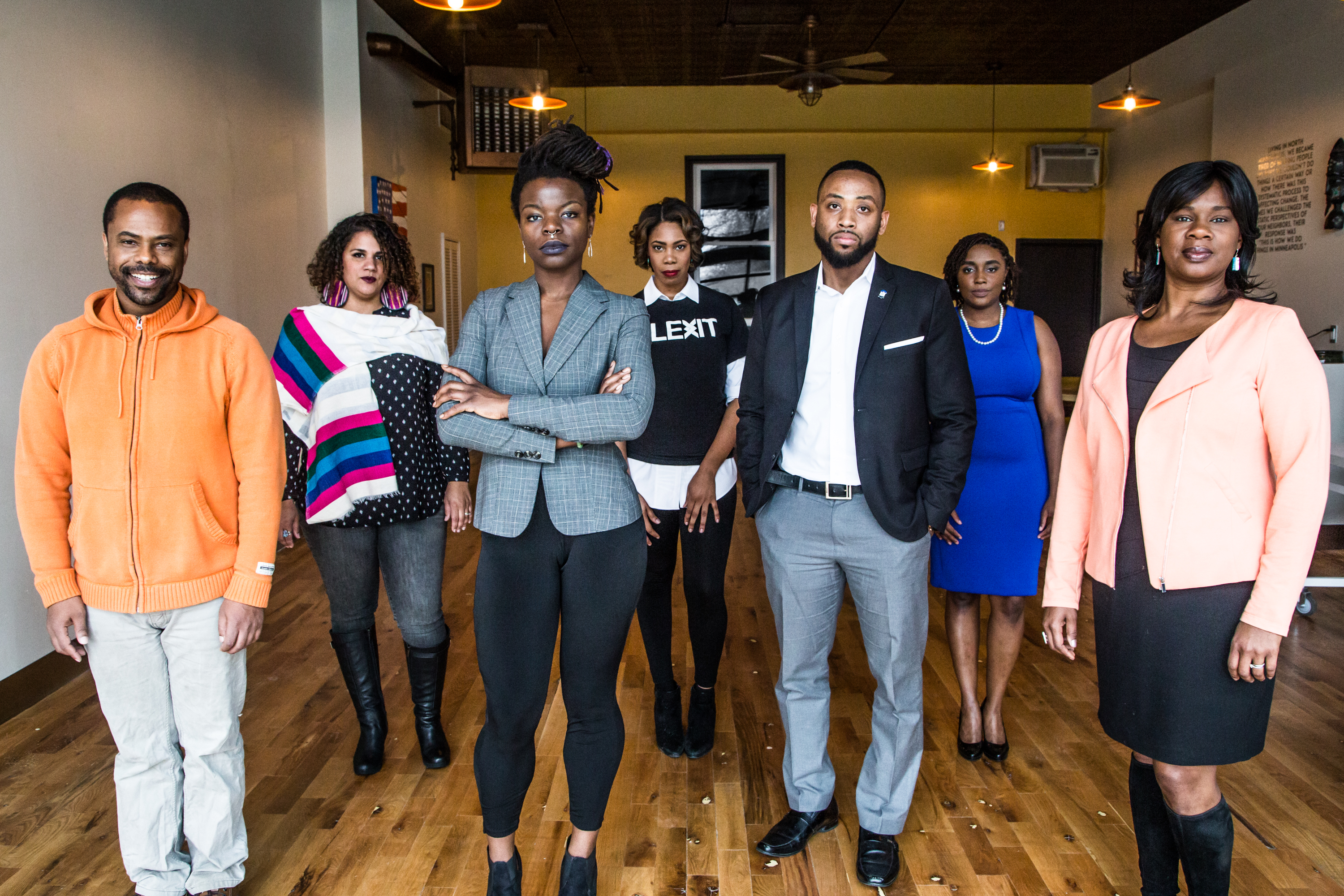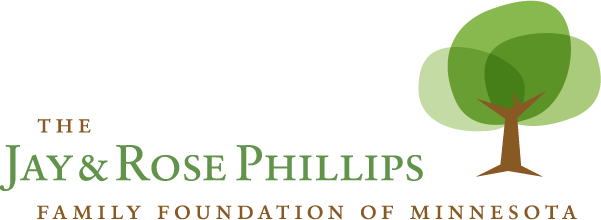
By Me’Lea Connelly, Director of the Association of Black Economic Power and Patrick Troska, Executive Director of the Foundation
How many of you can relate to this experience?
It was a perfect summer morning. A great night of sleep, a great morning workout and a balanced breakfast started the day out right. You leave just in time to make the first meeting slightly early and beat the mid-morning rush. In a rare show of brilliance you remembered your coffee and your sunglasses. You were winning and it was only 7:30am. Until you weren’t. At a complete stop on the freeway you scan the lanes beside you, still, there seems to be no slow progress. As the sound of zooming cars fade you hear the echo of voices chanting, “No Justice, No Peace!” You’re trapped. You make calls to buy some time. You put the car in park. You share strong expressions of frustration with your comrades on either lane side, who are now asking themselves the same questions racing in your mind, ‘what does this solve?’ ‘How does this help?’ ‘Why are we being punished for simply being here?’
This scene has played out several times in the Twin Cities as people have taken to the streets to protest injustice. No matter how you feel about this form of activism, it gets peoples’ attention. But activism can take many forms. With this blog, we offer a form of activism and resistance that you may not have considered: Using Black financial power to build economically vibrant communities that thrive in the face of mainstream resistance.
Let’s set the stage…..
We will admit, we’ve never explored all of North Minneapolis, but we’ve been through much of it many times. Like most people, we notice the vast majority of the Black population reside there.  What is interesting about this area is the lack of access to basic needs compared to all other parts of the city: Grocery stores, superstores (like Kmart, Walmart or Target) and even banks. Although we’ve never counted, we’re confident that there are more payday lenders or check cashing storefronts than there are actual banks. And we mean more by a lot! We do know there are 3 mainstream banks: TCF at Cub Foods, US Bank branch on West Broadway Avenue, and a Wells Fargo branch in Camden neighborhood. There are no community banks or credit unions. There are banks in neighboring suburbs, Northeast Minneapolis, and Downtown Minneapolis. But if you live in North Minneapolis your banking options are limited.
What is interesting about this area is the lack of access to basic needs compared to all other parts of the city: Grocery stores, superstores (like Kmart, Walmart or Target) and even banks. Although we’ve never counted, we’re confident that there are more payday lenders or check cashing storefronts than there are actual banks. And we mean more by a lot! We do know there are 3 mainstream banks: TCF at Cub Foods, US Bank branch on West Broadway Avenue, and a Wells Fargo branch in Camden neighborhood. There are no community banks or credit unions. There are banks in neighboring suburbs, Northeast Minneapolis, and Downtown Minneapolis. But if you live in North Minneapolis your banking options are limited.
Why is this important? The “Mapping Financial Opportunity Project” provides some insight:
“Household financial health may be affected by variations in the availability and type of financial services in their communities. For example, bank presence in low-income communities is associated with home ownership (Ergungor, 2010) and small business (Nguyen, 2015) opportunities. Conversely, the presence of alternative financial services (AFS) providers such as payday loan and check cashing stores in communities is associated with regular use of these services (Friedline & Kepple, 2016), which can be very costly due to the very high interest rates on short-term loans, unnecessary costs, hidden fees, and prepayment penalties (Bertrand & Morse, 2100; Consumer Financial Protection Bureau, 2013; Edmiston 2011; Wolff, 2015). Dependence on AFS is associated with financial problems in households (Melzer, 2100; Skiba & Tobacman 2009). Thus in communities where there are fewer banks or credit unions or where AFS providers are commonplace, households may lack sufficient opportunities to manage their finances using safe and affordable financial products and services (Baradaran, 2103; 2015).”
- Despard, M., & Freidline, T. (2017) Do metropolitan areas have equal access to banking?
Lawrence, KS: University of Kansas, Center on Assets, Education & Inclusion (AEDI)
In other words, when credible financial institutions are not available, the poor and disadvantaged rely on predatory lending services, making it virtually impossible to effectively manage finances, save money, and build wealth. This is a serious and growing problem in North Minneapolis where an abundance of alternative lending means it’s the primary tool for financial services. It’s no surprise research tells us more money leaves this community than is spent in it.
 But the solution is not to simply import a mainstream bank into North Minneapolis – as stated earlier, there are a few of them already. Why? Historically, mainstream banks have not made their products and services to meet the needs of low-income communities and many have been involved in predatory practices and redlining. One need look no further than the foreclosure crisis of 2008-2012. Because of predatory practices, large swaths of working poor and people of color lost their homes due to subprime loans and unaffordable products sold to them by unsavory providers who took their money and ran. There are exceptions, but mainstream banks for the most part do not exist to support and invest in the welfare of the local community, especially historically disadvantaged communities.
But the solution is not to simply import a mainstream bank into North Minneapolis – as stated earlier, there are a few of them already. Why? Historically, mainstream banks have not made their products and services to meet the needs of low-income communities and many have been involved in predatory practices and redlining. One need look no further than the foreclosure crisis of 2008-2012. Because of predatory practices, large swaths of working poor and people of color lost their homes due to subprime loans and unaffordable products sold to them by unsavory providers who took their money and ran. There are exceptions, but mainstream banks for the most part do not exist to support and invest in the welfare of the local community, especially historically disadvantaged communities.
So what works?
Simply put: Cooperative financial institutions like credit unions. Credit unions by their very definition are not-for-profit member owned cooperatives that exist to serve their members. The cooperative structure of credit unions creates a cycle of mutual assistance towards the common goal of the financial well-being of members and the local community. Profits made by the credit union are returned to members in the form of reduced fees, higher savings rates and lower loan rates. As Douglas Rushkoff eloquently put it at the 2017 CU Disruption Conference, credit unions take risks and circulate their assets throughout the community to strengthen the community; banks are in the business of acquiring and holding assets in order to build profits and mitigate risk. (Look it up and learn more at www.mycreditunion.gov).
At the end of 2016, the organization Blexit approached the Foundation about starting a black-led credit union in North Minneapolis. Community members at their meetings believed there were many ways to re-build their communities and one was establishing the financial power of North Minneapolis. A credit union was another form of resistance to injustice and would strengthen the community as a whole. It could provide a vehicle that supports individual financial health while building local infrastructure and services that strengthen the local economic ecosystem, creating interdependence and community vitality. This was exactly the kind of bold, entrepreneurial idea we were looking for that could be a game changer for North.
Working with the leadership of Blexit, we helped establish the Association for Black Economic Power (ABEP) to serve as a firewall between the proposed financial institution and the other activism of Blexit. The mission of ABEP is to transform local communities by equipping Black people with powerful economic tools and resources; its one and only activity is to establish a credit union by 2019. To date, Me’Lea Connelly has been hired as the Director of ABEP and charged with leading the project. An Executive Committee of seven Northside residents and Black leaders has been named, with the responsibility for final say on all key decisions to complete a federal charter application.
Key to all of this is significant and ongoing engagement of the community in all aspects of the credit union’s development and Black leadership that reflects and represents the voice of the community, some of the same voices who yell through blow horns on freeways during your commute. It’s clear these voices, this community, did not choose a neighborhood devoid of basic needs. The Black communities of Minnesota have a rich and full history of economic wealth and power…until it was slowly stripped away. From the devastation and destruction of the thriving Rondo community, intentional red-lining based on race in neighborhoods, the practice of wage inequity based on race, the malicious subprime loans made in vast majority to the Black community and so many more systemic violations targeting an entire community based on the color of their skin. Imagine the questions running through the minds of people who have witnessed and laid victim to these practices, who wake up, one perfect summer morning to heartache, discovering another member in their community has been killed by police for no apparent reason.
‘What does this solve?’ ‘How does this help?’ ‘Why are we being punished for simply being here?’
We know this is a heavy lift. We also know this is the right work at this point in time. We can no longer ask why young Black people are using their bodies as a form of resistance to counter violence towards their communities without asking ourselves what more we can do. Contributing to the effort to build financial power and a local self-sustaining economic ecosystem in North Minneapolis is not only work that answers our questions, it’s a cry from a blow horn in the face of racism, injustice and greed saying WE STAND WITH OUR COMMUNITY. We shout, together:
“I am no longer accepting the things I cannot change, I am changing the things I cannot accept”
– Angela Davis
We invite you to learn more and pledge to join us at www.abepmn.org.
